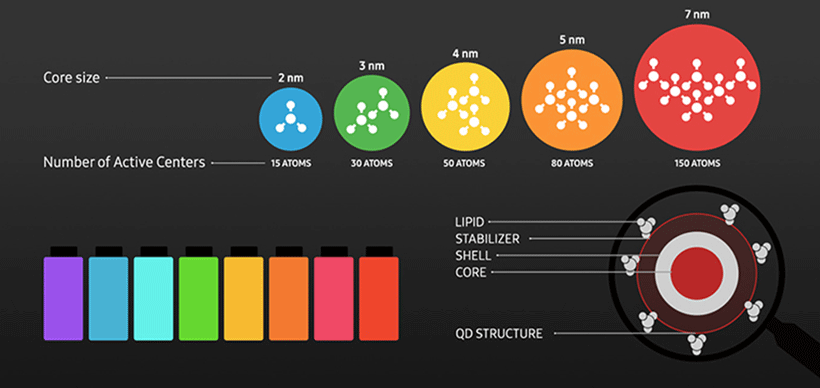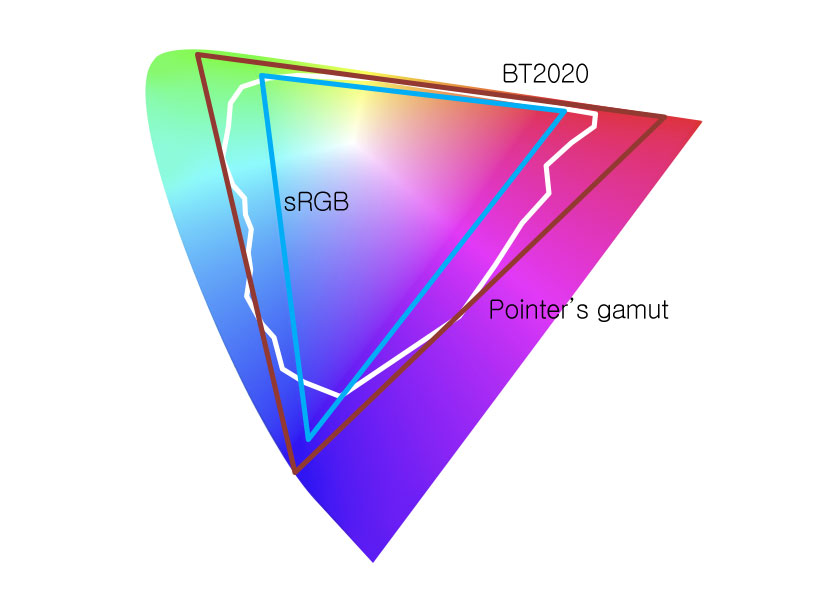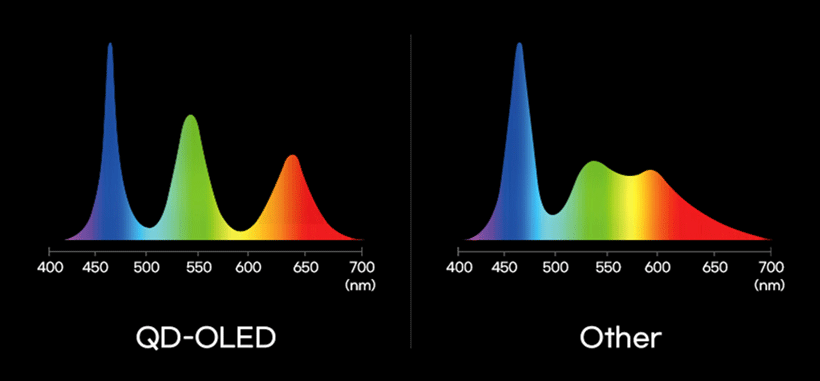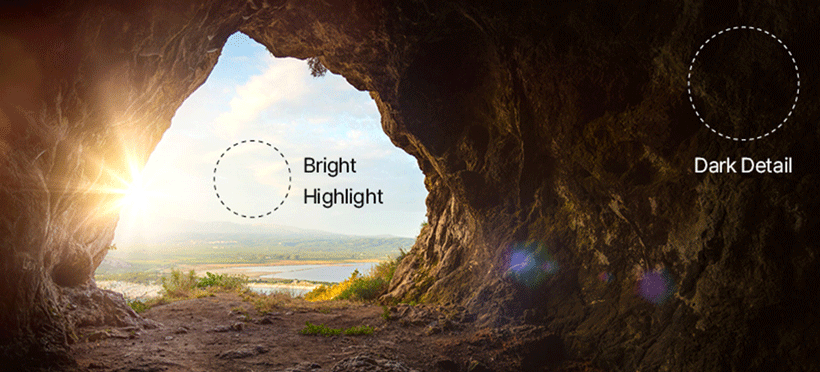
Humanity’s constant aspiration toward reproducing colors and forms of nature through displays
One of the key aspects that define this modern era would be information.
we are constantly inundated with so much of it. With the growing importance of information, devices that process and transmit information, along with displays that show us this information, have evolved and are transforming our lives through the exchange of text-based information and images. Humanity has aspired to bring these shapes and colors, as found in nature, through displays. In order to reproduce all the colors of nature, a display must be able to reproduce colors in the Pointer’s gamut (a color gamut that can be perceived by the human eye). But until recently, displays have failed to generate a significant portion of colors that exist in nature, meaning that we have only been able to see a limited range of colors on the screens of TVs, mobile phones, and monitors. The invention and development of quantum dots (QD) changed this, by expanding the range of colors in nature that can be reproduced in display devices.
What is a QD?

QD refers to a super-fine semiconductor particle that is a few nanometers (nm) in size, as illustrated in the image above. A QD generates light when exposed to light or electric current, and a major characteristic of this particle is that it generates a different color depending on the size. In other words, a smaller QD particle generates blue light, while a bigger one produces a red one. It is often dubbed the magician of light because of its ability to generate different colors depending on its size. In fact, the purity of the colors produced by a QD is quite high, which enables the production of accurate colors and efficient use of light, increasing its popularity as a display material.
※ 1 nanometer (㎚): 1/1,000,000,000 meter, or 1/10,000 of a strand of hair
How does a QD express colors in nature?

Why does the QD reproduce colors in nature better?
To answer this question, we must first define what it means to reproduce colors well. If you refer to the illustration above, the area in the cone shape that consists of various colors, shows all the colors on the visible spectrum. In other words, this is the total color space of nature that has been captured through an optical spectrometer. Colors that can be perceived by the human eye among this color gamut are referred to as the Pointer’s gamut. The wider the Pointer’s gamut a display can reproduce, the more colors we can enjoy on the screen. In particular, the closer each of the three vertices is to the three primary colors of red, green, and blue, the higher the purity of colors will be on the display, ensuring a higher accuracy of color reproduction.

How are each of the three vertices closer to each of the three primary colors? When the spectrum of light for the three primary colors is narrow and sharp enough to be clearly separated from the adjacent colors, or in other words when the color is less tainted by the adjacent colors. The width of the color spectrum on the QD-OLED is narrower than other displays, which enables the reproduction of colors of higher purity. This is why the display can reproduce colors that are closer to what is seen in nature by combining the purer three primary colors (above BT.2020 90%). With this independent three-primary color expression, QD-OLED is hardly affected by changes in brightness and has a constant color expression.
Brighter QD-OLED displays

LCDs that use a QD film, or OLED displays that use white pixels, use a color filter to reproduce colors that can result in a significant loss of light due to the failure of light being projected out of the screen. On the contrary, the QD-OLED has a significantly higher rate of light transmission thanks to its ability to convert colors on its own, increasing the rate of light transmission and subsequently creating brighter images.
On top of the high level of brightness, the OD-OLED minimizes the deterioration in image quality that is dependent on the viewing angle. High Dynamic Range (HDR), the color reproduction technique that ensures bright parts become brighter and dark parts darker, is implemented to a near-perfect level and offers a much more immersive experience to the users.

Experiencing colors of nature through the QD-OLED
Boasting excellent image quality thanks to its ability to reproduce three primary colors at a high level of purity, a wide viewing angle, and a high level of brightness (luminance), the QD-OLED has recently been upgraded in size to 77 inches. The discovery of QD, along with continued research and development efforts to apply QD particles to displays, has resulted in reproducing brighter colors closer to what is found in nature - now enjoyed on wider screens. The QD-OLED is expected to continue to evolve in terms of its materials and structure beyond our expectations, changing our lives for the better.

